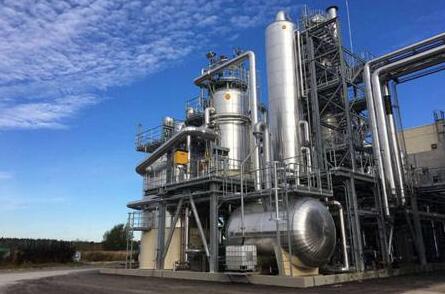Comparing different formaldehyde production processes
Formaldehyde is the main raw material for the manufacture of value-added chemicals such as melamine, urea-formaldehyde and phenolic resins. The most common product is in a 37% aqueous solution, but concentrations can be as high as 57%. Today, there are two main routes for industrial-scale production of formaldehyde: oxidation-dehydrogenation using silver catalysts, including complete or incomplete conversion of methanol; and direct oxidation of methanol to formaldehyde using metal oxide catalysts (Formox process).
As an important component of chemicals used in the production of resins, adhesives, plywood and particle board, insulation materials and lubricants, formaldehyde is produced commercially through the catalytic oxidation of methanol. The production of formaldehyde from methanol using a silver catalyst is carried out at high temperatures and produces formalin, a 37% aqueous solution of formaldehyde. Iron oxide catalysts used with molybdenum or vanadium in the formaldehyde production process also typically produce formalin, but can be optimized to produce concentrations as high as 57%. Higher concentrations can reduce transportation and storage costs and can be diluted later to the desired concentration. Formaldehyde production processes using metal oxide catalysts are considered more advanced and are common in high-volume, high-tech manufacturing facilities.

Formaldehyde production using metal oxide catalysts
The process is carried out at reactor temperatures of 250 to 500 degrees Celsius and allows efficient oxidation of methanol with 98% or more conversion of
2 CH 3 OH + O 2 → 2 CH 2 O + 2 H 2 O
Therefore, less methanol is required to obtain better results than the silver catalyst process. This is advantageous because raw material is the main input cost in formaldehyde production. In this formaldehyde production process, the lower methanol content in the feed mixture compared to steam and air keeps it below the explosive range. Since the vast majority is converted to formaldehyde, the resulting solution remains relatively pure with only very small amounts of carbon monoxide, dimethyl ether, carbon dioxide and formic acid byproducts.
Vaporized methanol, air (and sometimes tail gas from previous cycles) passes through the iron oxide catalyst in the reactor. The transfer fluid captures the oxygen and the heat given off during the conversion of methanol to formaldehyde. The heat is converted to steam that can be used for other plant uses, such as heating resins produced at the same site. The gas, including formaldehyde, enters the absorption chamber where it condenses into an aqueous solution in the water entering the chamber. After anion exchange reduces the formic acid content of the solution, the resulting product may contain up to 55% by weight of formaldehyde, depending on the amount of water introduced into the absorption chamber.
Formaldehyde production from methanol using silver catalyst
Performed at reactor temperatures of 600 degrees C and above, the silver catalyst reaction is less efficient than the iron oxide process. This is because, while iron oxide converts almost all methanol according to the above stoichiometry (2 CH 3 OH + O 2 → 2 CH 2 O + 2 H 2 O), the silver process converts some methanol through the dehydrogenation reaction.
CH 3 OH → CH 2 O + H 2
Compared to formaldehyde production processes, which are designed to convert almost all methanol, the silver process is carried out using higher concentrations of methanol, which consumes almost all of the oxygen. Manufacturing plants using silver catalysts use one of two sub-processes.
◮(almost) complete conversion of methanol
Heating the feedstock to approximately 700 degrees Celsius increases the rate and equilibrium of the heat-absorbing dehydrogenation reaction enough to convert 97% to 98% of the methanol. After cooling to shut down unwanted side reactions, the vapor mixture enters the absorption column where formaldehyde is eluted to 40-55% by weight with a small amount of aqueous methanol and formic acid (generated from excess oxygen present in the formaldehyde production process).
◮Incomplete conversion and distillate recovery
The feedstock is heated to approximately 630 degrees C to minimize unwanted secondary reactions. The formaldehyde production consumes all the oxygen, but the methanol conversion is only 77-87%. Again, the gas is cooled and sent to the absorption tower. The aqueous product contains about 42% by weight of formaldehyde. Since this solution may contain 20% or more unconverted methanol, it is moved to the distillation column to remove these unreacted gases for recirculation into the process. The solution after distillation can be further processed to reduce the formic acid content and increase the formaldehyde concentration to 55% by weight with a yield of 90% or more. Some manufacturers install a second catalytic converter to convert more methanol, avoiding leakage and eliminating the need for distillation and recovery.
More about other Chemical plant, please click here
评论
发表评论